Reading Time: 10 minutes
Carp fishing holds a unique allure in the angling world. Revered for their size and the cunning required to catch them, these fish have captivated the hearts of anglers across the globe. It’s not just the thrill of hooking into one of these robust fighters that draws fishermen to the water’s edge. It’s also the intricate strategy involved – especially when it comes to picking the best Carp bait.
Understanding what makes an effective Carp bait is about more than just attracting fish to your hook. It’s a blend of art and science – combining knowledge of Carp behavior, local conditions, and a bit of creativity. Carp are opportunistic feeders, yet they can be surprisingly selective, making the choice of bait a crucial factor in your fishing success.
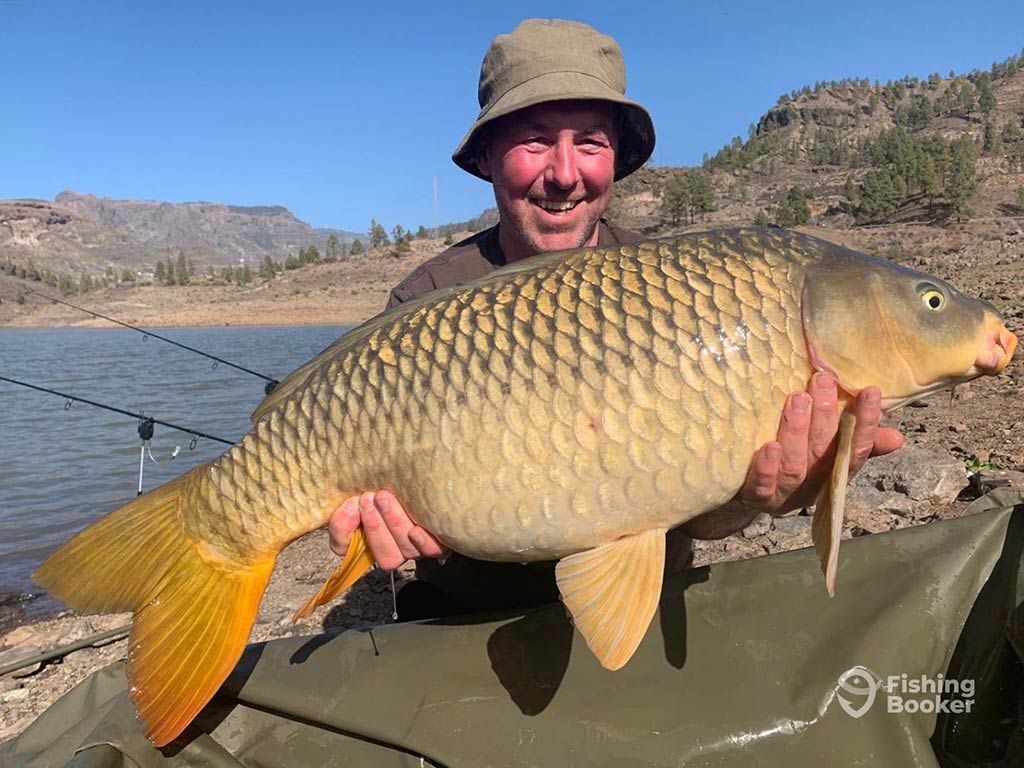
Photo courtesy of Carp Gran Canaria
In this comprehensive guide, I’ll delve into the world of Carp bait, from natural offerings that echo the Carp’s wild diet to innovative artificial alternatives that have changed the game. Whether you’re a seasoned Carp angler or just starting out, these insights into the best baits will equip you with the knowledge to elevate your Carp fishing skills. So, grab your gear, and let’s embark on this journey to unlock the secrets of successful Carp fishing.
Understanding Carp
The growing popularity of Carp fishing isn’t just due to the thrill of the catch. It’s also because understanding Carp is a fascinating study in itself. To effectively target these elusive fish, knowledge of their behavior and preferences is essential.
Carp is a species with a rich history and diverse family. It’s not just the Common Carp we often hear about. The family also includes the Mirror, Leather, and Grass Carp, each with its own unique habits.
Common Carp are known for their adaptability, thriving in various water bodies from slow-moving rivers to large, nutrient-rich lakes. On the other hand, Grass Carp are more selective, often found in weed-rich environments where they feed predominantly on aquatic plants.

The feeding habits of Carp are as diverse as their habitats. Typically bottom feeders, they use their barbels to sift through mud and debris for food. This scavenging nature means they’re not averse to a wide variety of food sources. Their diet often includes aquatic insects, crustaceans, and plant material. However, their adaptability means they can switch preferences based on what’s available, making them a challenging and interesting species to target.
Carp are also known for their wariness. They’re intelligent fish and can become cautious in the presence of anglers, especially in busy waters. This intelligence adds another layer of challenge to Carp fishing, as it requires anglers to be more strategic in their baiting approach.
Environmental factors also play a significant role in Carp behavior. Water temperature, for example, can significantly influence their feeding habits. In warmer temperatures, Carp are generally more active and feed more aggressively, whereas, in colder conditions, they become lethargic and feed less.
Understanding these nuances is vital for any angler looking to successfully target Carp. It’s this knowledge that informs the choice of bait, the approach to fishing, and ultimately, the success in landing these intriguing fish. With this as our foundation, we can now explore the various bait options that are most effective for catching Carp.
Best Natural Carp Bait
The world of natural bait for Carp is diverse, each with its unique allure and method of presentation. Understanding when and how to use these baits can significantly enhance your success rate when Carp fishing.
Sweetcorn
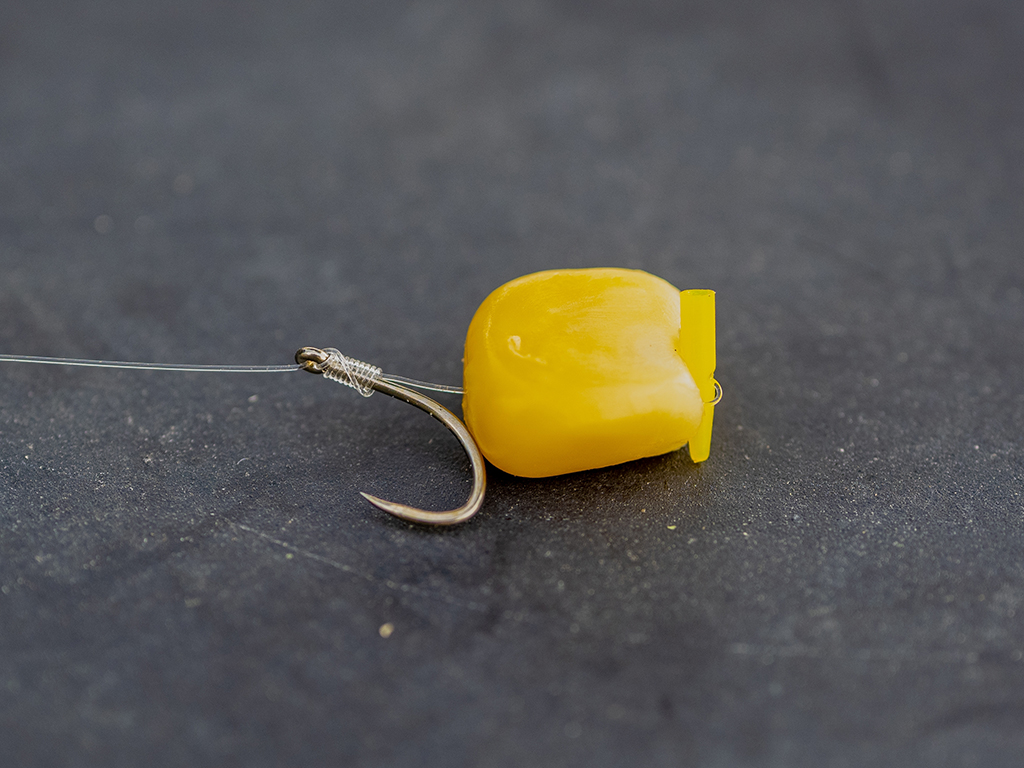
Sweetcorn is not just a favorite snack for humans. Carp are equally drawn to its sweetness and vibrant color. This bait is particularly effective in waters where Carp have a varied diet, including plant matter. The bright yellow kernels are visually appealing, especially in murky waters with lower visibility.
You can thread the corn directly onto your hook or use it on a hair rig. For a more attractive presentation, consider using multiple kernels to create a larger, more enticing target. The natural sugars in the corn also let out a smell, making it doubly effective!
In terms of technique, sweetcorn works well both on the bottom and mid-water. It’s light enough to be carried by mild currents, creating a natural presentation that a Carp will find hard to resist. Chumming the area with a few kernels can also draw Carp into your fishing zone, increasing your chances of a bite.
Boilies
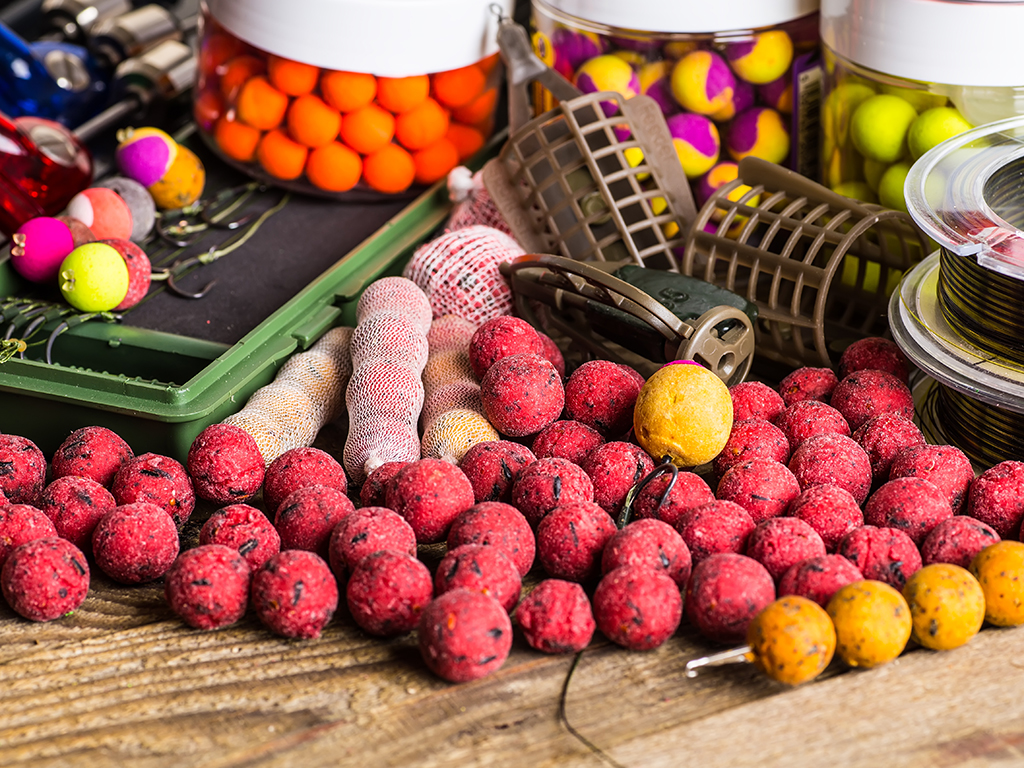
Boilies have gained immense popularity in Carp fishing due to their versatility and effectiveness. These dense, round baits are made from a mix of ingredients including fishmeal, milk proteins, bird food, and flavors. The key to successful boilie fishing is to match the flavor and size to the Carp’s natural foraging preferences in your fishing area.
For rigging, boilies are commonly combined with a hair rig to ensure the Carp can easily suck in the bait. This also allows for the use of larger boilies, which can be advantageous in waters with smaller nuisance fish. You can often use boilies through with a technique called “baiting up.” Here, you’ll scatter several boilies to create a feeding area, drawing Carp in and encouraging them to feed confidently.
Bread

A seemingly simple bait, bread can be highly effective for Carp, particularly for surface fishing. Bread can actually draw Carp to the surface, especially in urban waters where they’re used to being fed by humans. When using bread, it’s important to mold it onto the hook in a way that it remains buoyant. A popular technique is to tear off a piece of bread, slightly dampen it, and then gently press it around the hook. This will expose enough of the hook to catch ’em.
Fishing with bread on the surface requires patience and a keen eye, as it involves waiting for Carp to take the bait from the top. This method can be particularly thrilling, as you get to see the Carp suck in the bait. In the colder months, you can also use bread at the bottom. Pinching a small piece of bread around the hook and casting it into likely Carp spots can yield surprising results.
Worms
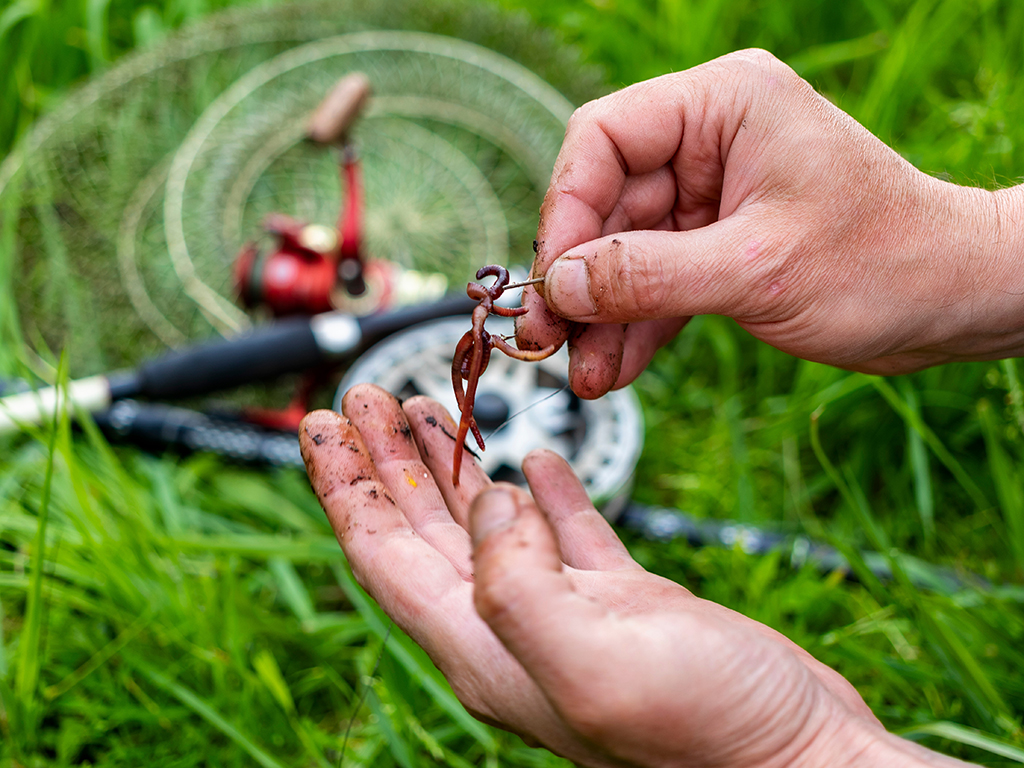
Worms are a natural and highly nutritious food source for Carp, making them an ideal bait choice. They’re especially useful in colder months or in heavily fished waters where Carp have become wary of more common baits. When using worms, you can thread several onto the hook to create a substantial offering or stick with just the one.
Worms are versatile in their presentation. You can use them on the bottom, under a float, or even by free-lining, depending on the water conditions and behavior of the Carp. The natural wriggling motion of the worms is highly attractive to Carp, often triggering an instinctive feeding response.
Maggots
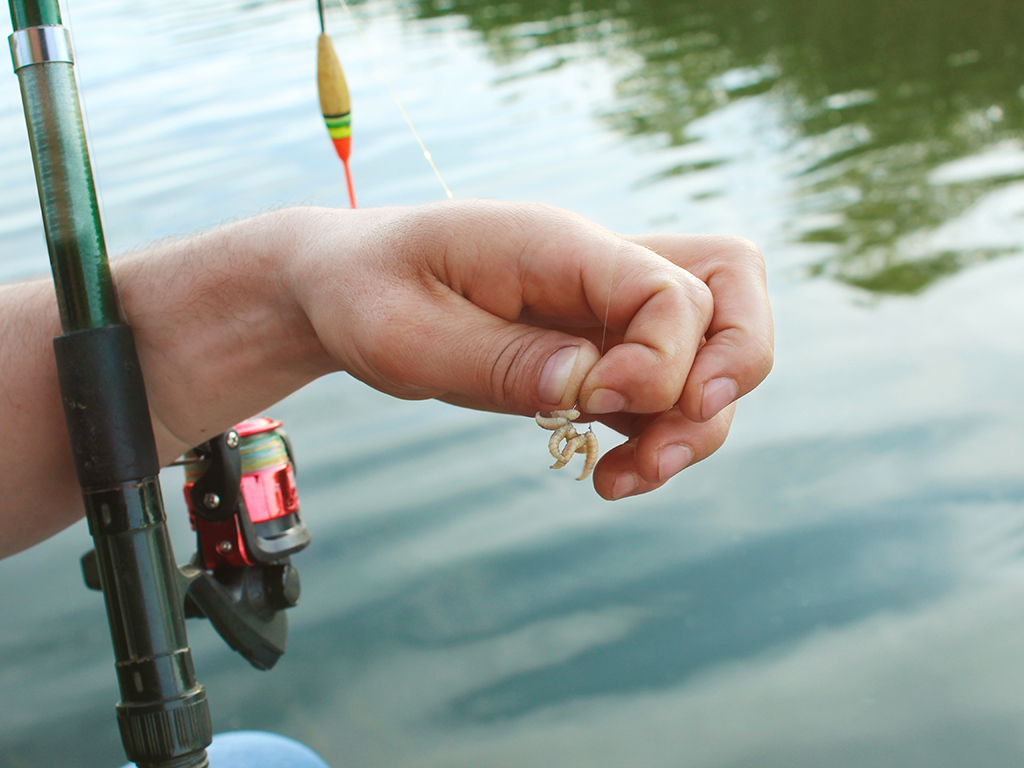
Maggots are another excellent bait for Carp, particularly in winter when Carp’s metabolism slows down, and they prefer an easy meal. These small baits are best used in a bunch, either threaded onto the hook or attached using a maggot clip. This method creates a writhing ball of bait that is highly visible and attractive to Carp.
In terms of presentation, you can fish maggots on the bottom or just off the bottom using a method called the “maggot feeder.” This technique involves using a feeder filled with maggots that slowly release, creating a bed of bait that attracts Carp to your hook. You can also utilize maggots in combination with ground bait to create a more attractive feeding area.
Best Artificial Baits and Lures for Carp
While natural baits are proven for Carp fishing, artificial baits and lures offer a more convenient alternative. These baits have evolved to become highly sophisticated, closely mimicking the appearance, scent, and movement of natural food sources.
Artificial Corn
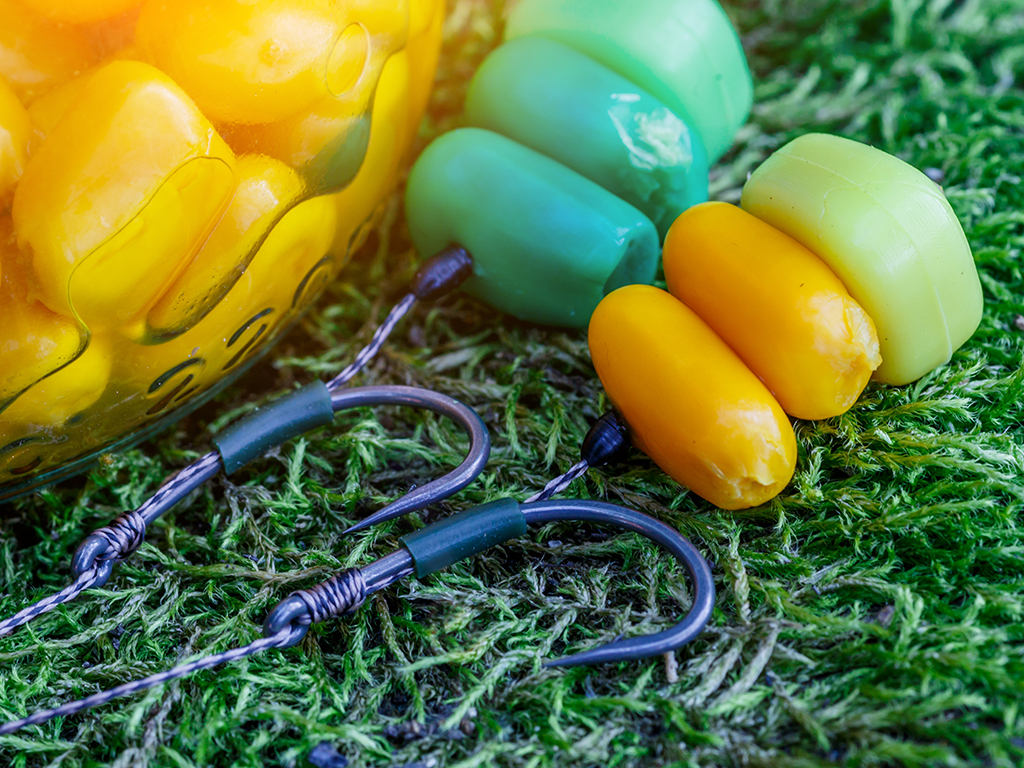
Much like real corn, artificial corn has become a staple in Carp fishing due to its effectiveness and ease of use. It mimics the appearance and texture of real corn but with the added benefit of durability and reusability. Some artificial corn even comes scented, enhancing its appeal. Rigging artificial corn is straightforward and can be done on a hair rig or directly on the hook. It’s particularly effective in pressured waters where Carp have become wary of natural baits.
When using artificial corn, consider pairing it with a real kernel or two. This combination can be more enticing, offering both the visual appeal and the natural scent of real corn. It’s also a great option for catch-and-release fishing, as it’s less likely to be swallowed by the fish.
Pellets
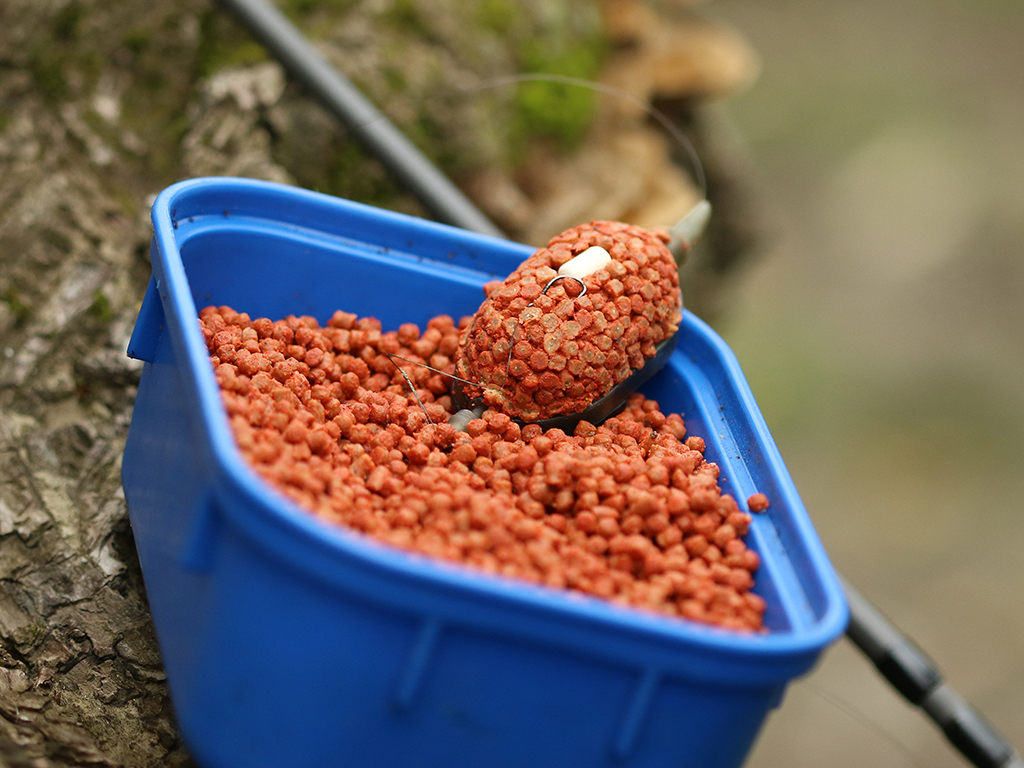
Carp pellets are designed to replicate the high-protein food pellets often used in Carp farming. They come in various sizes, flavors, and colors, allowing anglers to tailor their approach to the specific conditions and Carp preferences. You can use pellets on their own or in combination with other baits, such as boilies or natural baits, to create a more diverse feeding area.
In terms of presentation, pellets work well in a bait feeder or as part of a method feeder setup. They slowly dissolve, releasing scent and flavor into the water, which can attract Carp from a distance. Experimenting with different flavors and sizes can help identify the most effective combination for your specific fishing spot.
Flavored Dough Baits
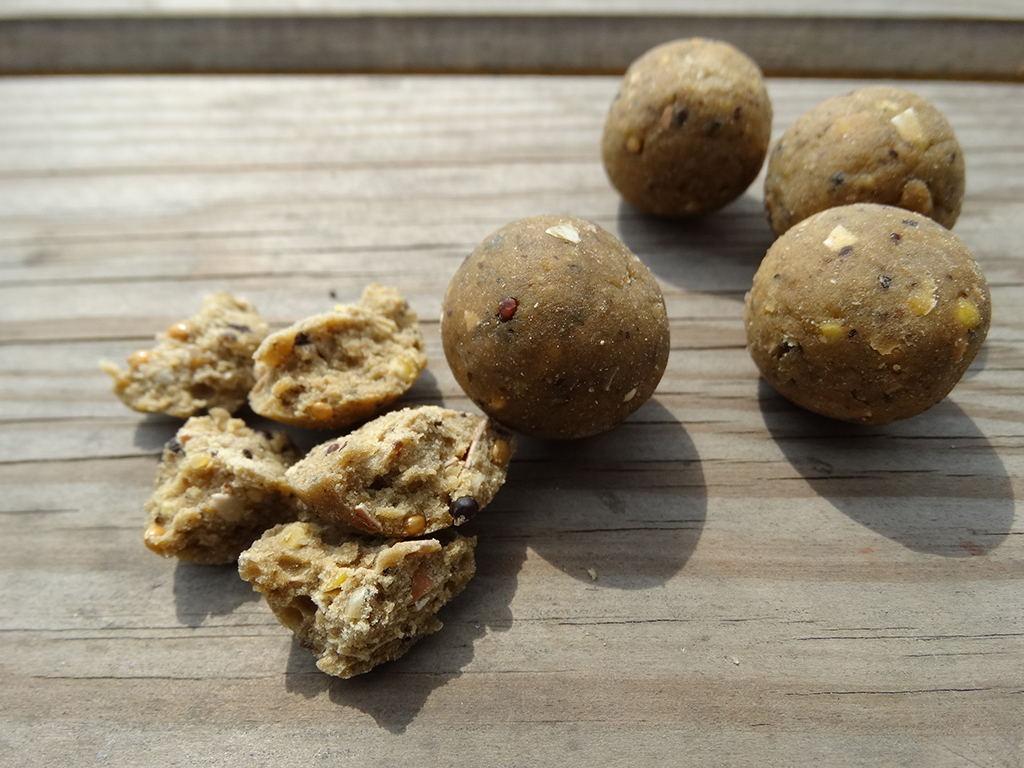
If you’re looking for a versatile and moldable option that can be shaped and sized as needed, flavored dough baits are for you. These baits can be infused with a range of scents and flavors – from sweet and fruity to savory and fishy – to match the Carp’s preferences. Dough baits are particularly useful in still waters or slow-moving currents where their scent can disperse effectively.
When fishing with dough baits, ensure they’re firmly molded onto the hook or hair rig to prevent them from disintegrating too quickly in the water. You can shape them into balls, teardrops, or other forms to mimic natural food sources. Adjust the size of your bait based on the size of the Carp you’re targeting.
Local Regulations and Ethical Considerations
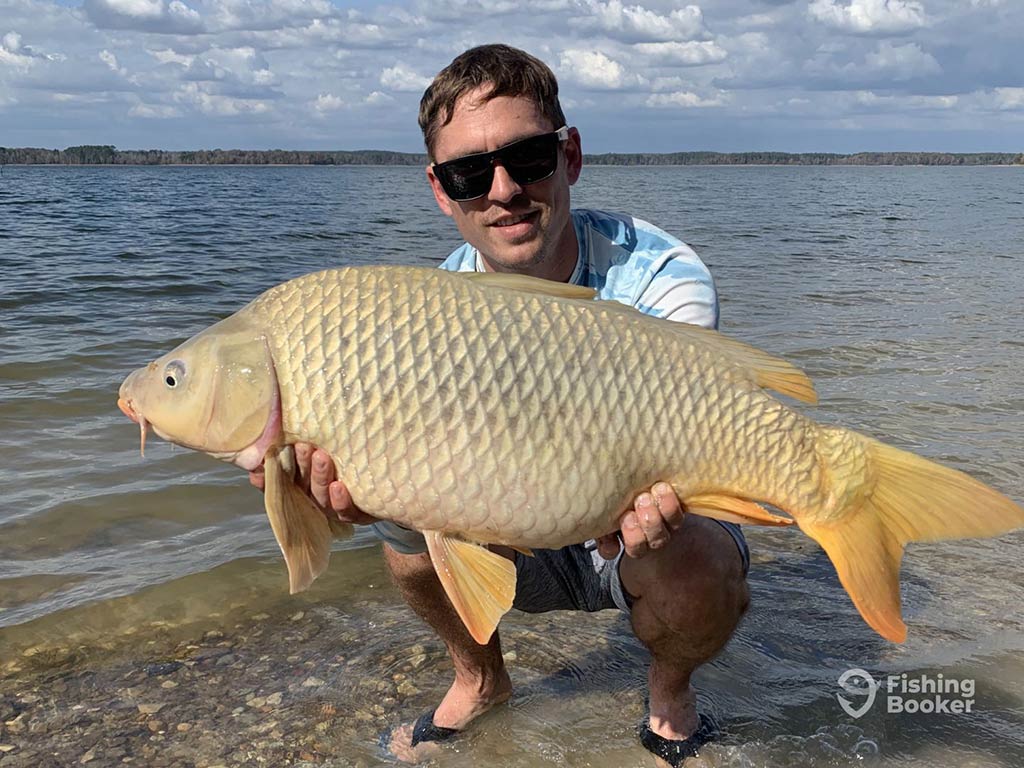
Photo courtesy of Black’s Guide Service
Carp fishing, like any form of angling, comes with a responsibility to adhere to local regulations and practice ethical fishing. These guidelines ensure the sustainability of Carp populations and the preservation of their habitats.
Every region has specific regulations regarding fishing, which can include rules about bait usage, size and bag limits, and specific Carp fishing seasons. Some areas might have restrictions on the use of certain baits or additives due to environmental concerns.
For instance, certain water bodies may prohibit the introduction of live baits to prevent the spread of invasive species. Always check with local fisheries authorities or consult the latest fishing regulations before heading out. This not only helps keep you out of trouble but also ensures you’re a responsible member of the angling community.
Catch and release is a common practice in Carp fishing, especially for larger, trophy-sized fish. The goal is to enjoy the sport while ensuring the fish’s survival post-catch. Using barbless hooks, handling the fish with wet hands, and keeping the fish in the water as much as possible are key practices. Additionally, using a proper Carp mat for weighing and unhooking can protect the fish from injuries.
Bait and Environment
Be mindful of the impact your bait could have on the local environment. Non-native baits can disrupt the ecological balance in new water systems. Biodegradable and environmentally friendly baits are preferable to minimize any potential harm. Furthermore, avoid overfeeding, as excessive bait can lead to water pollution and affect the natural foraging behavior of the fish.
Educating and Learning
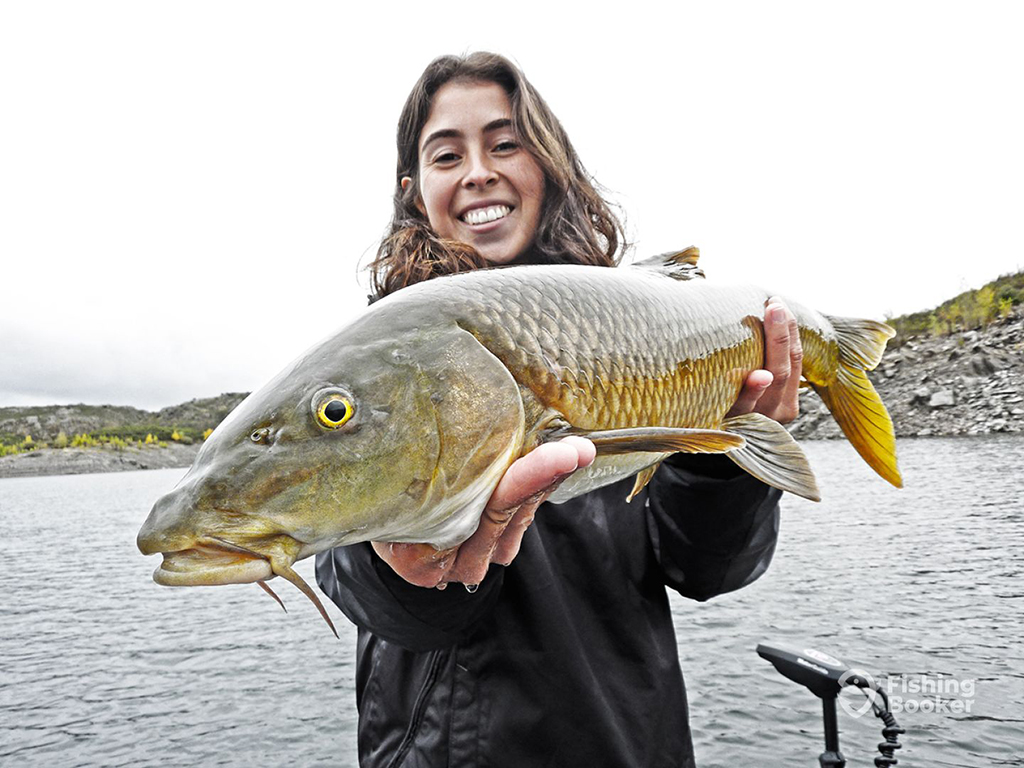
Photo courtesy of Predator Fishing Trips in Unspoilt Spain
Finally, being open to learning and educating others plays a vital role in ethical fishing. Share best practices with fellow anglers, especially those new to the sport, and be open to learning from others. The collective effort of the angling community can make a significant difference in promoting sustainable and ethical Carp fishing practices.
In summary, being aware of and adhering to local regulations, practicing ethical fishing, and respecting the Carp and their environment are essential aspects of responsible Carp fishing. As anglers, it’s our duty to ensure that the joy of Carp fishing can be sustained for future generations.
Carp Bait FAQs
Carp fishing can be productive throughout the year, but the best times are often during the late spring and early autumn. During these periods, water temperatures are ideal for Carp to feed actively.
In the winter, Carp tend to slow down, but you can get your hands on one with the right bait and technique.
Water temperature plays a significant role in determining Carp feeding behavior and, consequently, bait choice. In colder water, Carp are less active and prefer easily digestible, high-protein baits like maggots or worms. In warmer temperatures, they’re more likely to respond to visually stimulating and flavorful baits like sweetcorn, boilies, and flavored dough.
Yes, different types of Carp can require slightly different baiting strategies. For example, Common Carp are generally less picky and can be caught using a variety of baits. In contrast, Grass Carp prefer vegetation-based baits like bread or specific plant material.
Scent is a crucial factor in Carp fishing, as these fish have a highly developed sense of smell. Baits with strong, appealing scents can attract Carp from a distance, especially in murky or deep waters where visibility is limited. Using scented bait or adding attractants to your bait can significantly increase your chances of success.
Carp Fishing Bait: Your Key to Success
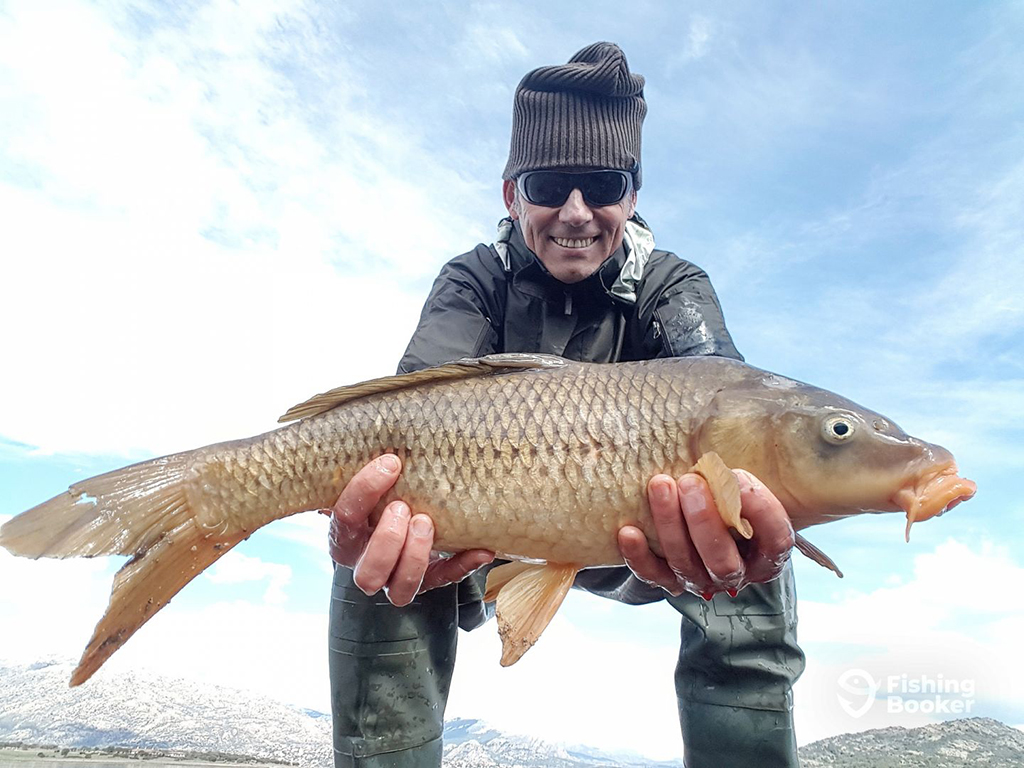
Photo courtesy of Pet Fishing – Madrid & Guadalajara
Successful Carp fishing is a blend of knowledge, skill, and respect for nature. From the selection of the right bait to the nuanced techniques of preparation and presentation, every step plays a pivotal role in the art of Carp fishing. Understanding Carp behavior, adapting to their feeding habits, and respecting their habitats are key to enjoying this sport and preserving it for future generations.
Carp fishing is more than just a pastime – it’s a journey that connects us with the environment and teaches patience. It also offers a unique sense of satisfaction when that elusive Carp finally takes the bait. Embrace the adventure that Carp fishing presents, armed with the knowledge from this guide, and enjoy the thrill of the catch with respect and responsibility. Happy fishing!
Are you an avid Carp angler? What’s your favorite bait? Share your experience with us in the comments below. We love hearing from you!
The post The Best Carp Bait: An Angler’s Guide appeared first on FishingBooker Blog.
https://fishingbooker.com/blog/best-carp-bait/
 CampingSurvivalistHuntingFishingExploringHikingPrivacy PolicyTerms And Conditions
CampingSurvivalistHuntingFishingExploringHikingPrivacy PolicyTerms And Conditions
